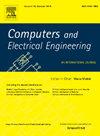A method for detection of Low Frequency Oscillatory modes in power system for wide area monitoring system
IF 4
3区 计算机科学
Q1 COMPUTER SCIENCE, HARDWARE & ARCHITECTURE
引用次数: 0
Abstract
The integration of renewable energy sources with power grids has amplified interactions among energy resources, causing Low-Frequency Oscillations (LFOs). The assessment of LFOs is very crucial in order to incorporate corrective measures to ensure the small signal stability of power system. The Total Least Square Estimation of Signal Parameters via Rotational Invariance Techniques (TLS-ESPRIT) method, known for precision in mode estimation, relies on prior knowledge of frequency components and loses accuracy at low signal-to-noise ratios (SNR). To overcome these limitations, this paper proposes an improved TLS-ESPRIT method utilizing a Singular Value (SV) ratio and a sequential partitioning technique for LFO modal parameter estimation. Initially, a SV ratio based low rank Hankel matrix filter is implemented to enhance noise resistance. Subsequently, a novel Model Order (MO) estimation technique is introduced using a convex combination of eigenvalue weightage to scale eigenvalue dominance in the trace of autocorrelation matrix and advanced medoid-based partitioning is explored to segregate the modes into signal and noise subspaces. In order to examine the efficacy of the suggested technique, comparison test of simulation results is conducted with some recently developed methods for synthetic signal, PMU data from a two area four machine system, practical probing data from the western electricity coordinating council, and oscillatory power data from the western system coordinated council 9 bus system and IEEE 39 bus system, simulated on real-time digital simulator.
求助全文
约1分钟内获得全文
求助全文
来源期刊

Computers & Electrical Engineering
工程技术-工程:电子与电气
CiteScore
9.20
自引率
7.00%
发文量
661
审稿时长
47 days
期刊介绍:
The impact of computers has nowhere been more revolutionary than in electrical engineering. The design, analysis, and operation of electrical and electronic systems are now dominated by computers, a transformation that has been motivated by the natural ease of interface between computers and electrical systems, and the promise of spectacular improvements in speed and efficiency.
Published since 1973, Computers & Electrical Engineering provides rapid publication of topical research into the integration of computer technology and computational techniques with electrical and electronic systems. The journal publishes papers featuring novel implementations of computers and computational techniques in areas like signal and image processing, high-performance computing, parallel processing, and communications. Special attention will be paid to papers describing innovative architectures, algorithms, and software tools.
 求助内容:
求助内容: 应助结果提醒方式:
应助结果提醒方式:


